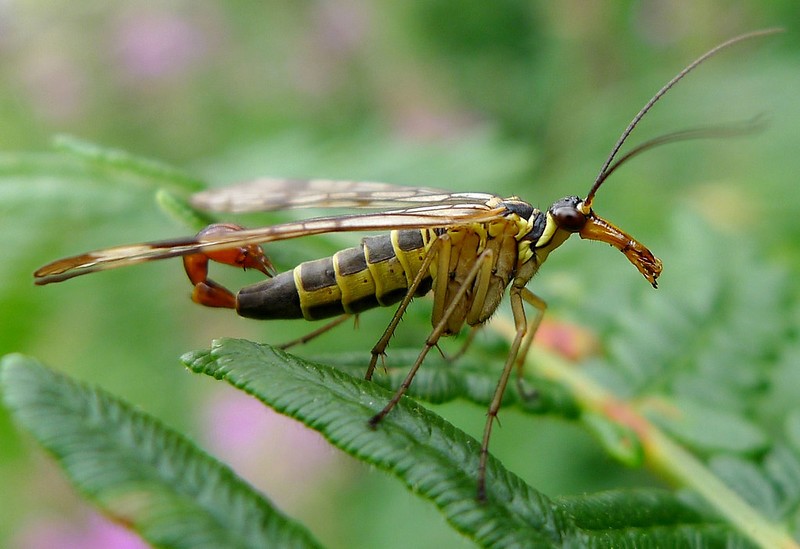The Scorpionfly is part of an order of winged insects with roughly 550 known species within this order. The various species of Scorpionfly inhabits areas throughout most of the warm climates on earth.
Surprisingly, the insect is actually also closely related to the common flea. They are popular for their distinctive appearance. Though they look fearsome, they are completely harmless to humans.
In most varieties, mating practices are quite elaborate. The female will choose the male who brings her the best gift. This gift is a choice of prey for consumption.
Scorpionfly Physical Description
This fly is a genus of small and medium-sized insects which possess slim, elongated bodies and compound eyes for vision. These are widely spaced on their heads. The mouth is primitive and consists of fleshy palps and long mandibles. The wings are extremely narrow.
The different types of Scorpionfly vary in length. An approximate average length is 1.4 in (3.5 cm). The abdominal section is long, and curls upwards. The tail ends in what seems to be a fearsome stinger, just like a scorpion. But remember, it is harmless. This is the source of the common name. However, only the males possess these. Why? Because it is actually an enlarged reproductive organ.
Scorpionfly Evolution, Diet, and Habits
After mating, the female Scorpionfly will lay her eggs as close to a water source as possible. In most species, the eggs hatch very quickly. The emerging larvae look very much like a caterpillar. These will average around 0.8 in (20 mm) in length.
The adult Scorpionfly also typically shows itself from early May to mid-September, in most climates. The majority of species prefer to inhabit areas of hedgerows and thick nettles.
Though they possess wings, the adults rarely fly more than a few feet. Lazy little things. They spend most of their lives crawling through areas of damp vegetation. There they predominantly prey upon a variety of dead insects, just like true scavengers.
Check out our other articles on Earth’s Extremely Threatened Flowers, Red-Veined Darter

